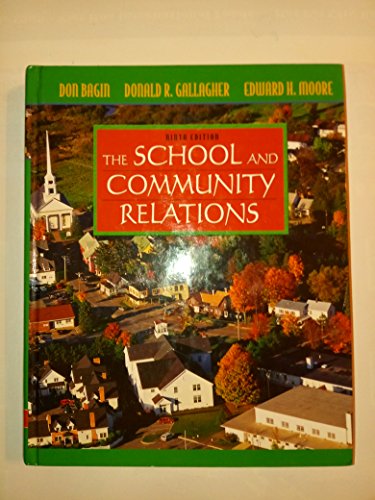Well-researched and applied, this best-selling text provides school officials the “how” and the “why” for effective communication with their staff and the community to improve school quality and student learning.
Chapters are sequenced so that the student can learn how to establish a public/community relations program that will be effective with every audience a school administrator will encounter. The authors continue to teach, research, and work extensively with school administrators, and this experience allows them to provide sound advice that is field tested and successful.
The School and Community Relations, 9/E
Don Bagin
Donald R. Gallagher
Edward H. Moore
I have generally been pleased with the content and flow of the text. My graduate school administration students have consistently indicated that the text is readable for them. I have looked at others, but consider this text the best available for my needs
William Durow, Creighton University
The early Chapters get the students off to the right start by understanding the big picture of a district. Chapters 6, 7, 8 are my favorites they are real eye openers for future administrators as well as educators deciding to stay in the classroom
Donna Towers, Lindenwood University
The ninth edition of this best-selling text offers school officials practical solutions for effective communication with their staffs and communities in order to improve learning and quality in schools. Based on their extensive experience, the authors illustrate how to establish a public relations program that will be effective with every audience a school administrator might encounter.
New features to this edition include:
-
A new chapter on Schools and Online Communication (Ch. 13) that discusses new ways in which schools and districts are using communication technologies to communicate with and collect feedback from the communities they serve, including e-newsletters, list servs, and Web communication.
-
A new chapter on Marketing and School Choice (Ch. 17) that examines the many competitive pressures schools face and how school marketing programs can be developed.
-
Discussion of new responsibilities challenging school communicators in the face of growing demands posed by federal and state freedom of information laws.
-
Thorough updates to reflect new challenges to school communications, such as health issues related to disease, acts of violence, and weather-related disasters.
-
Ideas for assessing the impact of school communication programs and evaluating the impact of investments in communication.
